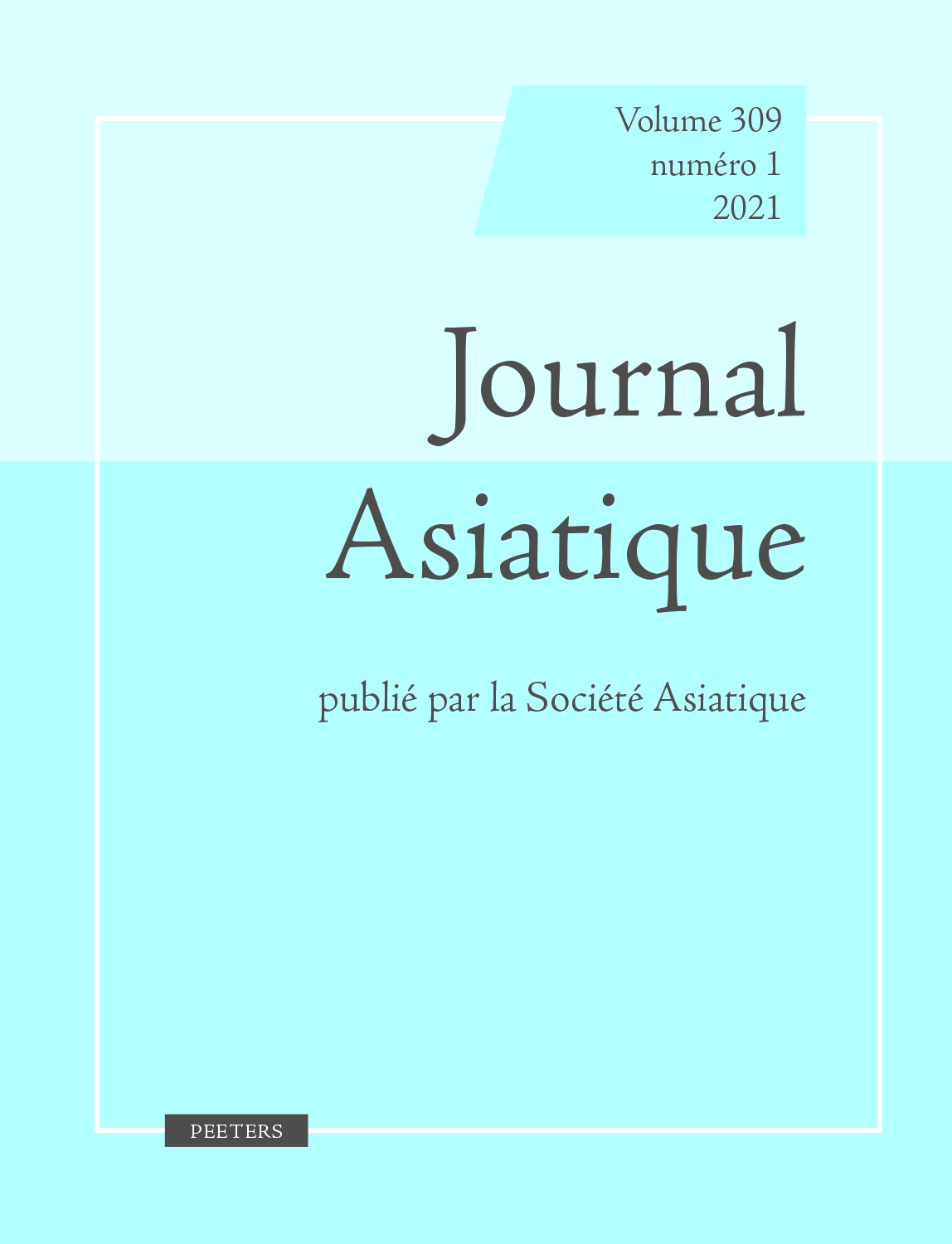 previous article in this issue previous article in this issue | next article in this issue  |

Preview first page |
Document Details : Title: Construction et gestion identitaire chez les Lawatiya du Sultanat d'Oman, de Multân à Masqaṭ Author(s): BHALLOO, Zahir Journal: Journal Asiatique Volume: 304 Issue: 2 Date: 2016 Pages: 217-230 DOI: 10.2143/JA.304.2.3186090 Abstract : La communauté marchande chiite Lawatiya constitue aujourd’hui l’un des plus puissants groupes socioéconomiques du Sultanat d’Oman. Il n’existe pourtant aucune étude détaillée sur les origines de ce groupe minoritaire. Les travaux universitaires s’appuient généralement sur la thèse de Calvin Allen Jr. qui identifie les Lawatiya aux hindous des castes marchandes du Sindh convertis au XVe siècle par Pîr Ṣadr al-Dîn à l’ismaélisme nizârite et connus sous le nom de Khojah. Dans cet article nous étudierons une source déterminante, un texte en arabe attribué à Jawâd al-Khâbûrî qui traite de l’histoire des Lawatiya. Contrairement à Allen, Jawâd al-Khâbûrî distingue les Lawatiya du Sultanat d’Oman des Khojah originaires du sous-continent indien, en les rattachant à l’état arabe fatimide ismaélien de Multân (Xe-XIe siècle). Nous démontrerons que le parcours atypique de Jawâd al-Khâbûrî (1912-1984), connu à Bombay et à Karachi sous le nom de Jawâd al-Masqaṭî (Jawad Muscati), peut probablement expliquer sa construction inédite de l’identité ethnique et religieuse des Lawatiya. Jawâd al-Khâbûrî contribua en effet à l’intégration des Lawatiya dans le projet de construction nationale mené par le sultan d’Oman, Qâbûs b. Saʻîd, depuis son arrivée au pouvoir en 1970. The Lawatiya Shîʻa merchant community constitutes one of the most powerful socioeconomic groups in the Sultanate of Oman today. There is, however, no detailed study of the origins of this minority group. Secondary studies generally base themselves on the thesis of Calvin Allen Jr. who identifies the Lawatiya as Hindus from merchant castes of Sindh converted in the fifteenth century by Pîr Sadr al-Dîn to Nizârî Ismâʻîlism and known as Khojah. In this article, we study a text in Arabic attributed to Jawâd al-Khâbûrî which presents an account of the history of the Lawatiya. Unlike Allen, Jawâd al-Khâbûrî distinguishes the Lawatiya from the Khojah originating from the Indian sub-continent by associating the Lawatiya with the Arab Fatimid Ismâʻîlî state of Multân (9th-10th centuries). We demonstrate that a study of the biography of Jawâd al-Khâbûrî (1912-1984) known in Bombay and Karachi as Jawâd al-Masqaṭî (Jawad Muscati) can probably explain his original construction of the ethnic and religious identity of the Lawatiya. Jawâd al-Khâbûrî contributed as a result to integrating the Lawatiya into the state building project presided over by the sultan of Oman, Qâbûs b. Saʻîd, since he came to power in 1970. |
|


